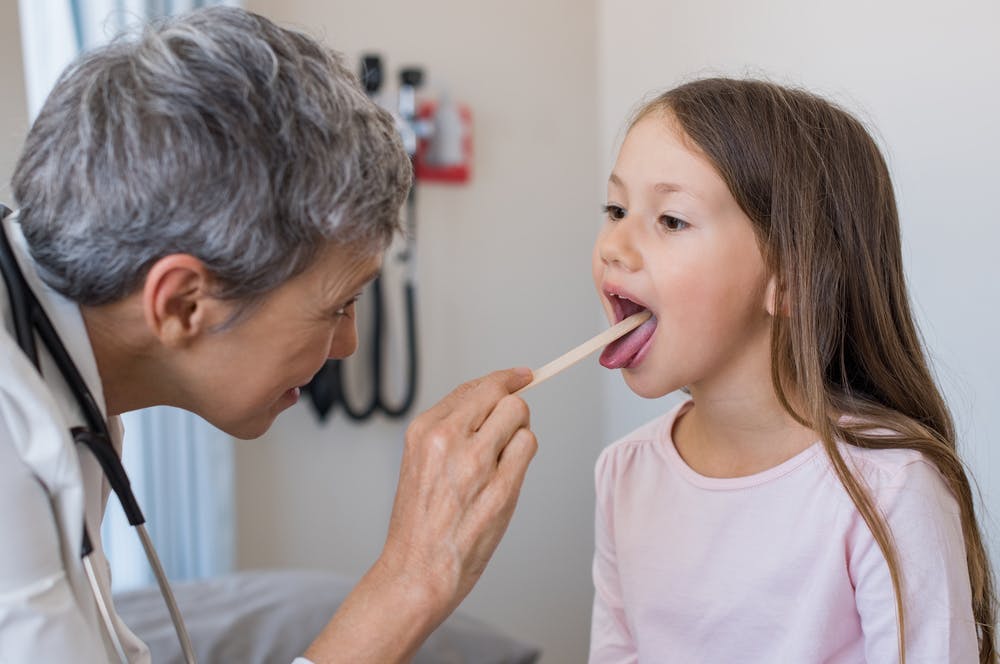Identifying and treating different types of skin rashes
Skin rashes are an irritated area of the skin that can be caused by many things that occur inside and outside your body.
Most skin rashes cause some discomfort. They can be painful, and itchy and can sometimes change the appearance of your skin. Rashes can also indicate more serious skin ailments, like eczema or ringworm.
Rashes can be caused by many things: allergens, chemicals, drugs, viruses, temperature, and even stress. Identifying a skin rash and pinpointing the underlying cause is vital to proper skin rash treatment and relief.
If you think you have any of the skin rashes below, you may need treatment to help the symptoms resolve. The type of treatment will depend on the rash you have.
Eczema
Eczema is just the nonspecific name of the group of diseases that result in dermatitis or inflammation of the skin.
How to identify eczema
The red, bumpy skin we associate with a rash is a symptom of eczema — of which there are many types. Atopic dermatitis is the most common, long-lasting, and tends to flare periodically. It may be accompanied by asthma or hay fever.
Just remember, eczema is the itch that becomes a rash.
Eczema treatment
Treatment for eczema may involve a combination of lifestyle changes, over-the-counter medications, and oral or topical prescription medications. The severity and type of eczema will determine the kind of treatment you need.
Ringworm
Ringworm, also called dermatophytosis, is a skin infection caused by many types of fungus.
How to identify ringworm
It’s called ringworm because the infection causes an itchy, red circular rash.
Ringworm can occur anywhere on the body and is very itchy. Did you know both athlete’s foot and jock itch are types of ringworm?
Ringworm treatment
Ringworms are highly contagious. Therefore, it is important to treat it quickly to prevent it from spreading to other parts of the body or other people. Anti-fungal medications are used to treat ringworm. These medications are creams, ointments, or pills and can be over-the-counter or prescriptions.
Shingles
Shingles are a reactivation of the chickenpox virus in the body. Anyone who has had chickenpox may develop shingles; it isn't known what reactivates the virus.
How to identify shingles
Shingles cause a painful rash that may appear as blisters around the trunk of the body. Pain can persist even after the rash is gone, which is called postherpetic neuralgia.
Shingles treatment
Treatments include pain relief and antiviral medications such as acyclovir or valacyclovir. A chickenpox vaccine in childhood or a shingles vaccine in adults can minimize the risk of developing shingles.
Herpes
Herpes is a sexually transmitted viral infection caused by HSV-1 or HSV-2. It causes sores on the mouth, rectum, or genitals.
How to identify herpes
It is common for people with herpes to have no symptoms or mild symptoms that could easily be mistaken for other skin conditions, like ingrown hair. When the virus is active, it can cause blisters to appear. This is known as an outbreak. Other symptoms may include fever, body aches, or other flu-like symptoms.
Herpes treatment
There is no cure for herpes, but certain medications can reduce the length of outbreaks and prevent it from being spread to other people.
Hives
Hives, also called urticaria, are red-colored, itchy bumps on the skin that appear and disappear quickly, typically caused by a reaction to a substance.
How to identify hives
Hives are red, itchy bumps on the skin. Certain foods, medications, stress, exercise, latex, plants, bacterial or viral infections, and bug bites can trigger them.
Hives treatment
The primary treatment for hives is to avoid the known triggers. An allergist can help you identify potential triggers and may recommend specific medications depending on what they are.
Contact dermatitis
Contact dermatitis is a common cause of many rashes. As the name implies, it occurs when you come into contact with a substance that irritates your skin. You may also develop contact dermatitis if exposed to an allergic substance.
Unlike bacterial or fungal infections, dermatitis is not contagious. Dermatitis often occurs when your skin touches an irritating substance in your physical environment. Allergies, illness, and genetics can also trigger it.
Examples of substances that some people react to include:
- Adhesives (used for false eyelashes or toupees)
- Antibiotics
- Balsam of Peru
- Cement
- Chemicals like hair dye and pesticides
- Fabrics and certain clothing
- Fabric softeners
- Fragrances (in perfumes, cosmetics, soap and moisturizers)
- Hair dye
- Metals like nickel are found in jewelry, watches, zippers, bra hooks, buttons, lipstick, and makeup containers
- Nail polish
- Plants like poison ivy, poison oak, and poison sumac
- Perm chemicals
- Rubber/latex gloves
- Soaps, shampoos and detergents (can be acidic/alkaline)
- Wet diapers (long-term exposure)
- Certain shaving lotions or sunscreens, sulfa ointments, perfumes, coal tar, or lime oil when exposed to sunlight
How to identify contact dermatitis
The most common dermatitis symptoms are redness and itching. You may also experience:
- Bumpy skin
- Blistering
- Oozing/weeping, draining, or crusting
- Scaly, raw, rough, or thicker skin
- Tenderness
Contact dermatitis treatment
Treatment for contact dermatitis first involves identifying and avoiding the trigger. Symptoms can also be relieved with antihistamines, topical antiseptics, or steroid creams.
Atopic dermatitis
Atopic dermatitis is another name for eczema. It’s caused by damage to the skin barrier, although environmental triggers can cause flare-ups.
How to identify atopic dermatitis
Symptoms of atopic dermatitis are the same as eczema and can include redness, dryness, and itching.
Atopic dermatitis treatment
Treatment for atopic dermatitis involves lifestyle changes, over-the-counter medications, and oral or topical prescription medications.
Seborrheic dermatitis
Seborrheic dermatitis is an infection that mainly affects the scalp but can also infect other areas of the body, such as the face, upper chest, and back.
How to identify seborrheic dermatitis
Seborrheic dermatitis causes scaly patches and inflamed red skin, mainly on the scalp. When the scalp is infected with seborrheic dermatitis, it can cause dandruff.
Seborrheic dermatitis treatment
Treatment involves self-care and medicated shampoos, creams, and lotions.
Rashes not related to dermatitis
Although inflamed skin is a symptom of many types of rashes, not all rashes are a form of dermatitis.
Skin can become irritated by the seasons and temperature changes. You may also notice skin changes when you’re more stressed than usual. Different types of skin rashes are also symptoms of some illnesses, like autoimmune conditions.
Heat rash
No. Heat rash is not dermatitis but rather a temperature-sensitive condition called miliaria.
The small, red “heat rashes” typically found on the neck, groin, armpits, and underneath the breasts are confined elevations of the skin called papules. Nevertheless, they are skin rashes that can itch.
Miliaria is caused by blocks in your sweat glands, forcing sweat to leak deeper into the skin and provoke an inflammatory response — hence the redness.
This is why miliaria occurs more often in hot, dry climates and in children. Treating it is as easy as wearing lighter clothing to regulate one’s temperature better or applying calamine lotion.
Stress rash
Stress can indeed cause rashes and hives.
When you are stressed, your body produces above-normal levels of cortisol and adrenaline. These hormones can affect how your skin reacts, making it more sensitive and susceptible to skin ailments.
You may have noticed your skin “breaking out” during stressful times. Rashes and hives are just another type of reaction. However, it is unclear why stress exacerbates chronic skin conditions like eczema, psoriasis, and rosacea.
Poison ivy
Poison ivy is an allergic reaction to an oily substance secreted by the poison ivy plant. The primary symptom of this reaction is an itchy, red rash with blisters. Find how to treat it with our guide to poison ivy.
Psoriasis
Psoriasis is a skin ailment that causes rashes. It’s an autoimmune disease of the skin that forms thick, red, bumpy rashes with dry, silvery scales. The scales result from a buildup of skin cells. Infection, stress, and genetics are thought to contribute to psoriasis.
Hay fever
Yes. Like allergic dermatitis, hay fever rashes are caused when allergens come in contact with your skin. Be careful not to confuse them with hives, which are allergic reactions caused by ingesting or inhaling allergens.
Winter skin rash
The cold air and low humidity of winter can strip your skin of its moisturizing oils, leading to dry skin, irritation, and rash. Using a moisturizing lotion would be the first action toward treatment.
Skin rash FAQs
Here are some commonly asked questions about different types of rashes:
What skin rashes should you worry about?
Seek immediate medical attention for a rash when it is all over your body, it is infected, painful, is beginning to blister, or you have a fever. If the rash is extremely itchy, uncomfortable, or doesn’t seem to be healing, it is best to seek medical attention.
What does an autoimmune rash look like?
An autoimmune rash will depend on the underlying condition that is causing it. Some rashes can be red and scaly, whereas others are purple-ish and inflamed. A healthcare provider can help properly diagnose your rash.
What is a circular rash similar to ringworm?
An itchy red circular rash can also be caused by Lyme disease, eczema, psoriasis, or pityriasis rosea. A healthcare provider can help diagnose and provide the best skin rash treatment.
Visit an urgent care for skin rash treatment
Many types of rashes are simple to resolve, but some have underlying causes that are extremely complex.
If you get a rash that doesn’t seem to go away, consider visiting our conveniently located urgent care centers. A healthcare provider can quickly identify a rash and let you know the best course of treatment.
We offer care for the whole family, including pediatric services. For immediate attention, you can walk in without an appointment or check in online to save your spot. We hope to have you back to feeling better in no time.
References:
- https://nationaleczema.org/eczema/treatment/
- https://www.cdc.gov/std/herpes/stdfact-herpes.htm
- https://acaai.org/allergies/allergic-conditions/skin-allergy/hives/
- https://www.psoriasis.org/about-psoriasis/
Written by Sarah Thebarge, Physician Assistant


